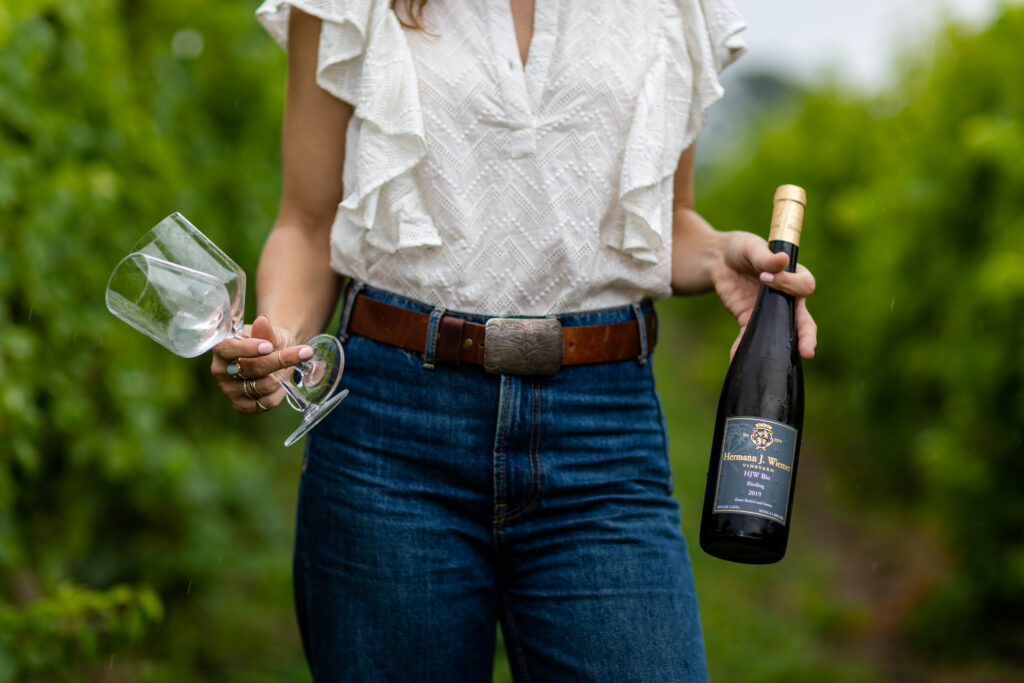
Direct-to-consumer (DTC) sales are increasingly becoming important for small and medium-sized wineries; in many cases, wine clubs are foundational to sustained DTC success.
The classic distribution model, amid widespread consolidation, is no longer viable for most wineries. Distributors have been merging and consolidating for decades now. Currently, two distributors account for more than half of all wine sales in the U.S. Meanwhile, the number of wineries across the country are increasing. Today, there are more than 11,564 wineries according to Wine Business Analytics, up from 9,234 in 2017; in New York the currently sits at 451, up from 380 in 2017. That means that the chances of landing a distributor who can devote the time and energy to help build a brand are increasingly infinitesimal.
Which is why wineries determined to stay in the black have found they have no choice but to create a direct channel to consumers. Thankfully, amid distributor consolidation woes, there have been positive changes on the legislative front, most notably the 2005 Granholm v. Heald Supreme Court decision, which allows more wineries to ship to consumers. Then during COVID, the DTC floodgates opened, and even wineries depending almost exclusively on wine tourism and distribution networks began to leverage DTC sales.
Launching a Wine Club To Boost Bottom Line
Creating a wine club is relatively straight forward. Wineries offer customers a selection of wines at a discount, delivered on a regular (usually monthly or quarterly) basis. Typically, wine clubs are free to join, and in addition to getting those regular deliveries of wine at a slight discount, club members often get first dibs (and sometimes discounts) on events and new releases.
Wineries, on average, get about 24% of their annual revenue from clubs, according the 2022’s Silicon Valley Bank report.
For some, like Whitecliff Vineyard and Winery in Gardiner, that number is higher.
“We have about 725 active members,” general manager Tristan Migliore explains. “We started the club shortly after opening in 1999, and grew it slowly. At this point, about 70% of our business is retail, and the club is the most important portion of that.”
They’ve maintained a strong base by “making joining an easy proposition. There are no fees. Plus, there members-only events and special sales for them throughout the year,” Migliore says.
Other winemakers just starting out have found that wine clubs let them hit the ground running. For Hillick & Hobbs, a Seneca Lake winery launched in 2021 by renowned winemaker Paul Hobbs, creating a wine club helped establish a nascent community early on, before they could build a tasting room.
“When the club was first launched, we did not have a physical location for visitors,” says winemaker Lynne Fahy. “As a small winery launching with a single Riesling, we wanted to create an opportunity to connect with our consumers beyond our website and encourage additional sales.”
Fahy says they designed the club to make it easy for buyers, giving them flexibility on shipping with the desired number of bottles they want and $0.01 shipping.
“With the opening of our hospitality center on Seneca Lake last year, we can now adapt our subscription club to include additional benefits, and we see opportunities to create lasting relationships with those who join and encourage repeat purchases,” Fahy says.
Requires … Next to No Effort
Easy for customers—but what about the brands?
From harvest to bottling and back again, every task at a winery requires a heavy lift and a great deal of forethought. Which is why running a paired-down back-to-basics wine club is so important for wineries like Element Winery.
The beauty of wine clubs, says Element’s winemaker Christopher Bates, MS, is that they require little to no effort—if they’re set up that way.
“We limit our club pretty severely to keep things simple,” Bates says. “We decided to max out at 50 members when we launched in 2014. We are at 50 members now and have been for a while without doing much to promote it. We posted it on the website and we told people about it in our shop.”
It is easy to set up and execute, and a significant portion of the 500-cases winery’s bottom line is now dependent on the plug-and-go model, Bates explains.
Clubs Build Community
During COVID, wine clubs became the best (and often only) way for wineries to cement connections to their community of supporters.
At Anthony Road Wine Company in Penn Yan, which produces around 13,000 cases and has a 1,100-strong club membership, wine club and events manager Natalee Carroll says they re-imagined the tasting room experience during the lengthy shutdown.
“We were supported by local and regional club members who continued to purchase wines for delivery and curbside pick up,” she says. “Members also spread the word and encouraged friends and relatives to join. Like many of our neighbors, our online sales and memberships increased while shut down. When we reopened with the new tasting model our team members found it much more comfortable to engage with guests and this led to a significant increase in memberships.”
Jackie Cecere, chief operating officer at Ventosa Vineyards in Geneva, says the draw for many members—aside from the wine—is the social aspect.
Ventosa launched its wine club in 2010, and says that during and after the pandemic, membership picked up.
“People look forward to our pick-up parties,” she says. “It allows them to get out and socialize, and our club members also buy a lot of wine when they come, so that helps sales.”
The sense of community that the club has built has been a priceless perk that Christopher Colloca, PhD, CEO and owner of Colloca Estate Winery values as much as the steady income it brings in.
Colloca launched its wine club in 2018, and currently has 523 members who purchase an allocation of six of their wines, four times per year. Members receive a friends and family discount of 25% on the wines in the allocations, plus the same on new releases, tasting room purchases, library wines and other special offers.
“They even get 25% off their bottle purchases in our two restaurants on the property,” Colloca says. “Plus, they get 10% off all Colloca Estate Winery event tickets and wine pairing dinners, and exclusive invitations to pick-up parties where complimentary food and wines are served alongside special, not-yet-released wines.”
Colloca says the wine club has grown through traditional direct-mail and social media promotions, but also word of mouth about the convivial, generous events that define club membership.
For Tabora Farm & Winery, providing easy-to-deliver perks to club members is an easy way to show appreciation for their support, according to winemaker Matthew Butts. Launched in 2020, the Tabora Newlands Wine Society has 140 members, and requires a case purchase for a year’s worth of benefits.
“Our members not only enjoy a healthy discount on wine purchases and free tastings but also exclusive access to pre-release wines, discounted event tickets and ability to join our yearly wine club dinner,” he says. “As our membership grows, our focus is to retain these wonderful individuals by offering exclusive society member only wines, along with including a discount for deli menu items during our wine pick up weekends.”
Win-wins are tough to find—but when it comes to wine clubs, both members and wineries see themselves as getting a great deal.

